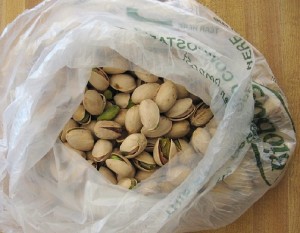 It frustrates me that the notion of snacking is still being attacked in some quarters of the health and fitness industry. When I was growing up during the 1960s, snacking was blamed for unwanted weight gain. It even acquired the moniker of “in-between-meal snacking” to give it added vilification in case the point hadn’t been made strongly enough. On the flip side, parents were forever blaming snacking for spoiling their kids’ appetite for dinner. It seems snacking couldn’t win for losing back in the day!
It frustrates me that the notion of snacking is still being attacked in some quarters of the health and fitness industry. When I was growing up during the 1960s, snacking was blamed for unwanted weight gain. It even acquired the moniker of “in-between-meal snacking” to give it added vilification in case the point hadn’t been made strongly enough. On the flip side, parents were forever blaming snacking for spoiling their kids’ appetite for dinner. It seems snacking couldn’t win for losing back in the day!
Fast forward fifty years and it seems little has changed with regards to the poor, defenseless afternoon snack. Perhaps it’s because the most common remedy for between meal hunger is to head for the vending machine or pantry and opting for the most convenient form of “nourishment.” This typically turns out to be a candy bar or bag of chips. And thinking that the low-fat and so-called “healthy” snacks have you covered, well, think again.
By now you’ve probably heard it over and over how eating a snack high in sugar will momentarily satisfy your hunger, but will leave you hanging an hour later no better for having consumed the empty calories. This is aggravated if your lunch consisted of hitting the drive-thru. It’s kind of hard to sustain yourself eating less than nutritious main meals. Let’s start with the assumption that you’re eating a balanced diet consisting of real foods even if it’s not strictly low-carb.
The main challenge of eating healthy between-meal snacks is being prepared. Preparation is key. You will need to include the basic ingredients for your snacks as part of your weekly grocery shopping list. What you want is a nutritious snack that will satisfy your immediate hunger and also tide you over to your next meal, or if necessary, your next snack.
I’m including certain food groups as well as individual foods that aren’t typically allowed or at best, frowned upon in some low-carb eating plans. Ultimately, it’s up to you to decide what you’re going to eat and not allow your choices to be swayed by dietary dogma. At the end of the day, having the occasional banana beats the heck out of the momentary satisfaction delivered by a Snickers bar.
- Fruit – the low-carb directive on fruit is to go with low glycemic index fruits such as berries, but unless you’re on a ketogenic diet, any kind of fruit is fine for snacking, even a dreaded banana now and then.
- Meat – if you’re OK with processed meats, then cold cuts and pepperoni are quite convenient. Uncured, nitrate-free meats are a better choice.
- Cheese – all kinds of cheese make for terrific snacks. Their fat content also helps satiate hunger more effectively than a candy bar or bag of chips.
- Yogurt – something else that’s usually forbidden on very low-carb diets, but if you can tolerate milk, then full-fat plain yogurt (avoid the fruit varieties due to the added sugar). It’s almost like having a dish of ice cream!
- Sugar-free dessert and candy items – coconut oil fudge and other sugar-free treats can satisfy a mid-afternoon sweet tooth flareup. See some of my videos for suggestions.
- Nuts – all kinds, especially pistachios, pecans, cashews, almonds, and walnuts. Just be sure to watch quantities as it’s easy to get carried away.
In the video below, I review some of my favorite snack items:
The timing of snacks should depend on when you’re feeling hungry. One of the maxims of low-carb eating is to eat when you’re hungry. I love this! This is the exact opposite of a severely calorie-restricted diet that depends on self-denial and willpower. Now, this doesn’t mean going hog-wild with your food consumption. At its core, a low-carb diet works because of lowering daily calorie consumption below what your body requires for maintenance. In general, you shouldn’t be eating massive meals. And if you can’t wait until the next one, then think of snacks as the stepping stones to get you there unscathed.



Leave a Reply